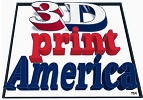3D Filament Temp and Fan Settings
1. PLA (Polylactic Acid):
· Printing Temperature: 190-220°C
· Bed Temperature: 20-60°C
· Fan Speed: 50-100%
· PLA is easy to print with and suitable for beginners. It doesn’t require a heated bed, but using one can improve bed adhesion.
2. ABS (Acrylonitrile Butadiene Styrene):
· Printing Temperature: 230-250°C
· Bed Temperature: 80-110°C
· Fan Speed: 0-50%
· ABS requires a heated bed to prevent warping. Printing in an enclosed environment helps maintain temperature stability.
3. PETG (Polyethylene Terephthalate Glycol):
· Printing Temperature: 230-250°C
· Bed Temperature: 50-80°C
· Fan Speed: 0-50%
· PETG has good strength and chemical resistance. It is less prone to warping than ABS and provides better layer adhesion.
4. TPU (Thermoplastic Polyurethane):
· Printing Temperature: 220-240°C
· Bed Temperature: 20-60°C
· Fan Speed: 0-50%
· TPU is a flexible filament, so slow print speeds and retraction settings are recommended to prevent filament stretching.
5. PC (Polycarbonate):
· Printing Temperature: 250-280°C
· Bed Temperature: 80-110°C
· Fan Speed: 0-30%
· PC requires high temperatures and an enclosed print chamber to prevent warping. It has excellent strength and heat resistance.
6. Nylon:
· Printing Temperature: 230-260°C
· Bed Temperature: 60-80°C
· Fan Speed: 0-30%
· Nylon is hygroscopic, so storing it in a dry environment is crucial. It benefits from an enclosed print chamber to minimize warping.
7. PVA (Polyvinyl Alcohol):
· Printing Temperature: 180-220°C
· Bed Temperature: 45-60°C
· Fan Speed: 0-30%
· PVA is a water-soluble support filament used with dual extrusion printers. It requires careful storage to prevent moisture absorption.
8. HIPS (High Impact Polystyrene):
· Printing Temperature: 210-240°C
· Bed Temperature: 70-100°C
· Fan Speed: 0-50%
· HIPS is commonly used as a support material for ABS. It dissolves in limonene, providing easy support removal.
9. ASA (Acrylonitrile Styrene Acrylate):
· Printing Temperature: 230-250°C
· Bed Temperature: 80-110°C
· Fan Speed: 0-50%
· ASA is similar to ABS but offers better UV resistance, making it suitable for outdoor applications.
10. Carbon Fiber Filament:
· Printing Temperature: 200-250°C
· Bed Temperature: 60-80°C
· Fan Speed: 0-50%
· Carbon fiber filaments are abrasive, so a hardened steel nozzle is recommended. Adjusting retraction settings can minimize stringing.
11. Wood Filament:
· Printing Temperature: 190-220°C
· Bed Temperature: 20-60°C
· Fan Speed: 50-100%
· Wood filament contains real wood fibers. A larger nozzle size helps achieve better wood texture. Regular cleaning of the nozzle is necessary.
12. Metal-Filled Filament:
· Printing Temperature: Varies (refer to manufacturer’s guidelines)
· Bed Temperature: Varies (refer to manufacturer’s guidelines)
· Fan Speed: 0-30%
· Metal-filled filaments contain metal particles. They require higher temperatures and may have increased wear on the nozzle.
13. Conductive Filament:
· Printing Temperature: 200-230°C
· Bed Temperature: 20-60°C
· Fan Speed: 50-100%
· Conductive filaments can be used for creating circuits and sensors. Higher infill density enhances conductivity.
14. Flexible Filament (e.g., TPE, TPC):
· Printing Temperature: 210-230°C
· Bed Temperature: 20-60°C
· Fan Speed: 0-30%
· Flexible filaments require slower print speeds, reduced retraction, and good bed adhesion to prevent filament deformation.
15. Glow-in-the-Dark Filament:
· Printing Temperature: 200-230°C
· Bed Temperature: 20-60°C
· Fan Speed: 50-100%
· Glow-in-the-dark filaments contain phosphorescent pigments. Higher layer heights can enhance the glowing effect.
These settings are general guidelines with useful starting points for experimentation, it is essential to refer to your specific filament manufacturer’s recommendations for more precise settings.
May your 3D journey flow !
